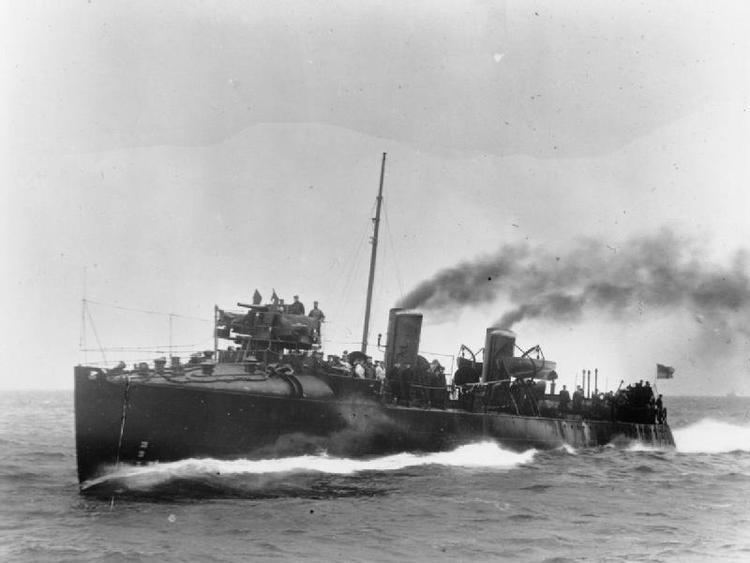Built 1895–1899 Completed 10 | Succeeded by River class (E class) In commission 1896–1921 | |
 | ||
Builders John I. Thornycroft & Company | ||
The D class as they were known from 1913 was a fairly homogeneous group of torpedo boat destroyers (TBDs) built for the Royal Navy in the mid-1890s. They were all constructed to the individual designs of their builder, John I. Thornycroft & Company of Chiswick, to meet Admiralty specifications. The uniting feature of the class was a top speed of 30 knots (56 km/h) and they all had two funnels. In 1913 the nine surviving "30 knotter" vessels with two funnels (all ten had been built by Thornycroft, but Ariel was lost before their renaming as "D" class) were retrospectively classified by the Admiralty as the "D" class to provide some system to the naming of HM destroyers. In the same way those with three funnels were classified as the "C" class and those with four funnels as the "B" class. All these vessels had a distinctive "turtleback" forecastle that was intended to clear water from the bow, but actually tended to dig the bow in to anything of a sea, resulting in a very wet conning position. They were better constructed than their A-class forebears (the "26 knotter" and "27 knotter" groups), but still were poor seaboats unable to reach top speed in anything but perfect conditions.
They generally displaced 355 to 370 tons and had a length of 210 ft (64 m). All were powered by triple expansion steam engines for 5,700 indicated horsepower (4,300 kW) and had coal-fired water-tube boilers, except for the final vessel (Stag) in which the engine power was slightly raised to 5,800 ihp (4,300 kW). Armament was one QF 12 pounder on a bandstand on the forecastle, five QF 6 pounder (two sided abreast the conning tower, two sided between the funnels and one on the quarterdeck) and 2 single tubes for 18-inch (450-mm) torpedoes.
Due to the successful development of their previous 26 and 27 knot torpedo boat destroyers, John I Thornycroft & Company developed their two funnel design for the 1894/95 – 1897/98 building programs. The ships were considered an incremental improvement to the previous 27-knot design of the 1893/94 program. This design would be used for all follow-on turtleback ships under the 30-knot specification. The 30 knot torpedo boat destroyers built by Thornycroft were referred to as two funnel – 30 knot ships and were not assigned a class name at the time.
They featured a large fore-bridge, mast halfway between bridge and fore funnel, turtleback cut-away bow, large round stern, both torpedo tubes on centerline aft of second funnel and two funnels. They had a Thornycroft stern with the rudder not visible. They had dual rudders which made them very responsive to the helm.
Ships
All ten of the "D" class were built by Thornycroft at Chiswick, in four batches.
